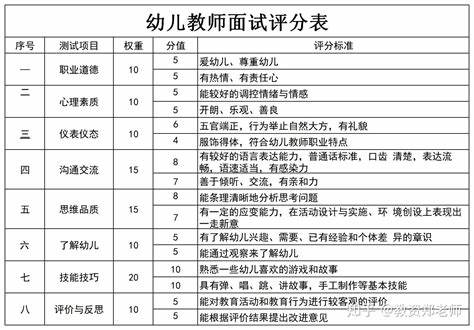What are the criteria for classifying weather?
发布:贺孟北
- I、How are the day, evening, night; clear, cloudy, slightly cloudy, overcast; light snow, moderate snow, and heavy snow mentioned in the weather forecast?
- II、In weather forecasts, what are the classification criteria for sunny, slightly cloudy, cloudy, and overcast?
- III、Rainfall grade classification standards
- IV、How does the weather forecast classify heavy rain?
Light snow: The daily snowfall (melted into water) is less than 2.5 mm. Moderate snow: Daily snowfall (melted into water) 2.6-4.9 mm. Heavy snow: The amount of snow falling during the day (which melts into water) reaches or exceeds 5.0 mm.
Cloudy: means that the clouds cover most of the sky, the total cloud cover is greater than 30% but less than 70%, and the sun can penetrate the clouds to the ground.
Cloudy: the clouds are almost covered In the sky, the total cloud cover is greater than 70%.

Light rain: rainfall less than 10mm in 1d (or 24h).
Moderate rain: 10-25mm rainfall in 1 day (or 24 hours).
Heavy rain: 25 to 50mm of rainfall in 1 day (or 24 hours).
Heavy rain: 50 to 100mm of rainfall in 1 day (or 24 hours).
Heavy rainstorm: 100-250mm rainfall in 1 day (or 24 hours).
Extremely heavy rain: rainfall exceeding 250mm in 1 day (or 24 hours).
Light snow: A snowfall process in which the amount of snowfall within 12 hours is less than 1.0mm (equivalent to the amount of melted rainwater, the same below) or the amount of snowfall within 24 hours is less than 2.5mm.
Medium snow: a snowfall process in which the snowfall amount is 1.0~3.0mm within 12 hours, or the snowfall amount is 2.5~5.0mm within 24 hours, or the snow depth reaches 3CM.
Heavy snow: a snowfall process in which the snowfall amount is 3.0~6.0mm within 12 hours, or the snowfall amount is 5.0~10.0mm within 24 hours, or the snow depth reaches 5CM.
Blizzard: A snowfall process in which the snowfall amount is greater than 6.0mm within 12 hours, or the snowfall amount is greater than 10.0mm within 24 hours, or the snow depth reaches 8CM.
Heavy blizzard: a snowfall process in which the snowfall amount is greater than 12.0mm within 12 hours or the snowfall amount is greater than 20.0mm within 24 hours or the snow depth reaches 16CM.
Extremely heavy snowfall: a snowfall process in which the snowfall amount is greater than 24.0mm within 12 hours, or the snowfall amount is greater than 30.0mm within 24 hours, or the snow depth reaches 32CM.
The classification standards for rainfall levels will consider the following factors:
1. Rainfall amount: Depending on different regions and different purposes, the classification standards for rainfall levels may be different. Generally speaking, rainfall can be divided into light rain, moderate rain, heavy rain and heavy rain. Specific classification standards can be determined based on historical rainfall data and actual conditions.
2. Rainfall duration: In addition to rainfall amount, rainfall duration is also an important consideration in classifying rainfall levels. For example, long periods of light rain may cause flooding, while short periods of heavy rain may cause flash floods.
3. Geographical environment: Under different geographical environments, the classification standards for rainfall levels will also be different. For example, mountainous areas may have a higher tolerance for heavy rainfall, while plain areas may have a greater impact from the same amount of rainfall.
4. Degree of impact: The classification of rainfall levels also needs to consider the degree of impact of rainfall on human activities and the natural environment. For example, rainfall has different impacts on agriculture, transportation, urban drainage systems, etc., so the classification standards need to compre hensively consider these factors.
The influencing factors and application scope of rainfall grade classification are an important topic involving the fields of meteorology and water resources management. Factors that affect the classification of rainfall levels include rainfall amount, rainfall frequency, rainfall duration, rainfall intensity, etc. Compre hensive assessment of these factors can help understand rainfall characteristics and trends, and provide scientific basis for water resources planning, irrigation decisions, flood pre vention and disaster reduction, etc. In addition, rainfall grade classification has a wide range of applications, covering agriculture, urban planning, ecological environment protection and other fields. Through the classification and analysis of rainfall levels, the impact of rainfall on different areas can be better understood, so that corresponding measures can be taken to cope with and adapt to the challenges of climate change and water resources management.
In summary: The influencing factors and application scope of rainfall grade classification are an important topic involving the fields of meteorology and water resources management.
[Legal basis]:
"Interim Measures for the Management of Issuing Weather Forecasts"
Article 3
The state implements a unified issuance system for publicly released weather forecasts and severe weather warnings. Meteorological stations at all levels under the jurisdiction of the National Meteorological Administration are responsible for publishing. The Central Meteorological Observatory and meteorological stations at all levels below are responsible for issuing weather forecasts and disastrous weather warnings within the station's area of responsibility. The Central Meteorological Observatory and coastal meteorological stations at all levels are also responsible for issuing weather forecasts within their responsible sea areas. and severe weather warnings.
2. The concept of rainfall intensity: Rainfall intensity refers to the rainfall amount within a unit period, usually calculated in millimeters/minute or millimeters/hour.
3. Standards of my country’s Meteorological Department: my country’s Meteorological Department usually divides rainfall intensity into the following categories: light rain, moderate rain, heavy rain, and heavy rain. The specific classification criteria are: light rain means the rainfall is less than 5 mm in 12 hours, or the rainfall is less than 10 mm in 24 hours; moderate rain means the rainfall is between 5 mm and 14.9 mm in 12 hours, or the rainfall is between 10 mm and 24.9 mm in 24 hours. mm; heavy rain refers to the rainfall between 15 mm and 29.9 mm within 12 hours, or the rainfall between 25 mm and 49.9 mm within 24 hours.
4. Classification of heavy rain warnings: The quantitative standards for heavy rain may differ in different regions, depending on local conditions. Meteorologically, heavy rains are usually divided into three levels: heavy rain means that the rainfall in 12 hours is equal to or greater than 30 mm, or the rainfall in 24 hours is equal to or greater than 50 mm; heavy rainstorm means that the rainfall in 12 hours is equal to or greater than 70 mm, or the rainfall in 24 hours is equal to or greater than 70 mm, or the rainfall in 24 hours is equal to or greater than 70 mm Equal to or greater than 100 mm; extremely heavy rainstorm refers to a 12-hour rainfall equal to or greater than 140 mm, or a 24-hour rainfall equal to or greater than 250 mm.
以上就是关于What are the criteria for classifying weather?的全部内容,希望能够帮到您。
版权声明:本文来自用户投稿,不代表【大桂阳分类信息】立场,本平台所发表的文章、图片属于原权利人所有,因客观原因,或会存在不当使用的情况,非恶意侵犯原权利人相关权益,敬请相关权利人谅解并与我们联系,我们将及时处理,共同维护良好的网络创作环境。
大家都在看
-

天津4月3日什么天气
很抱歉,我无法提供具体的日期天气信息,因为我的数据源中没有实时更新或历史天气记录。通常,您可以通过查询天气预报网站、使用天气应用程序或联系当地气象服务来获取特定日期
-

四川2020年7月份天气情况统计表
日期最高温度(°C)最低温度(°C)天气状况7月1日3022晴朗7月2日3123多云7月3日3224晴朗7月4日3325晴
-

天气预报怎么设置成100度
天气预报中的"相对湿度100%'是什么意思天气预报中的“相对湿度100%”是指空气中的水蒸气压与相同温度下的饱和水蒸气压的百分比为100%。相对湿度用RH表示,表示空气中的绝对湿度与
-

2024年下半年教师招聘还有吗
年教师报名时间的具体信息尚未公布,但根据以往的经验,预计教师资格证考试的报名时间为2024年1月上旬。2.对于2024年上半年中小学教师资格考试,笔试的报名时间定在2024年1月上
-

安吉董岭天气预报一周7天
安吉受台风影响大。安吉气象台2023年7月28日18时32分发布雨黄色预信号:受台风“杜苏芮”外围环流影响,我山川乡、上墅乡一带已出现雨天气,最大云上草原72.8毫米。
-

oppo天气旧版本2018
哎哟喂,各位手机控们,你们还记得2018年那会吗?那时候,我们用的手机可没现在这么智能,但也是有各种好玩的小应用啊!比如说,咱们今天要聊的这个“oppo天气”旧版本2018。那时
-

泗水2024教师招聘时间
查询时间:2023年8月15日11:00—8月18日16:00报名时间:2023年8月15日11:00—8月18日16:00网上缴费时间:2023年8月15日11:00—8月19日16:00笔试时间:2023年8月23日9:00—8月26日9:30面试时间:202
-

东明教师2024招聘岗位
1、学校现有三个校区,中学部位于浦东新区东明路300号,占地面积110亩,建筑面积43000平方米,小学部位于南码路1316弄1号,际部位于徐汇区田林十三村1号。学校现有学生2400名,在
-

无锡2023年1月天气预报
年降雨量比2021降雨量多,但具体的以你所在地区的实时天气预报为主。时下就2023还有一段时间,但是就以往的数据来看2023年降雨量比2021降雨量多,预计2023年3--10月全平均气温比历年
-

临沂高中老师招聘公告2024
预计报名数26万左右。据2021年统计,山东临沂参加中考的数达26、6万左右,随着教育事业的发展,将有越来越多的学生走上中考的道路。广大师生、家及社会各界高度关注初中
